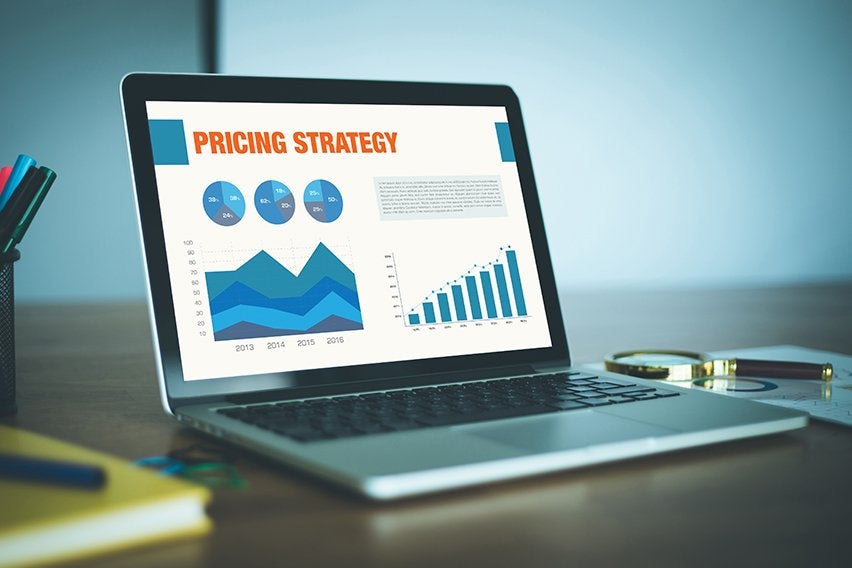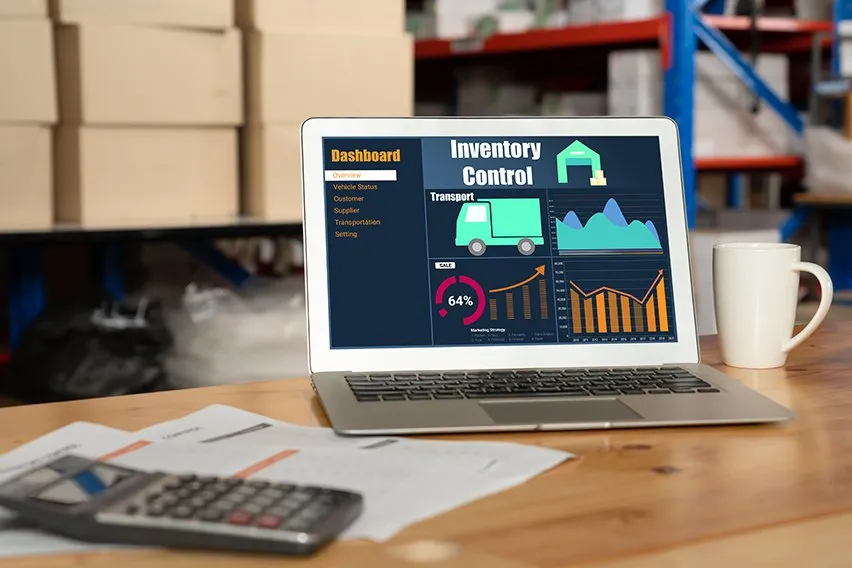What Are Pricing Strategies & 8 Common Strategies for Business

Pricing is one of the most important strategies any business can employ. Understanding pricing can make or break a business. Unfortunately, most small businesses don’t think about pricing nearly enough when starting out. They have to find out the hard way that pricing is one of the most fundamental drivers in the business. An effective pricing strategy is the strongest tool you can start out with.
But how is pricing worked out? Well, there are common pricing strategies available that all business owners should know. Keep reading to find out more about pricing, and 8 common strategies that can grow any business.
Here’s What We’ll Cover:
What is Pricing? Understanding the Basics
8 Different Pricing Strategies & How They Work
How Do I Choose the Best Pricing Strategy?
What is Pricing? Understanding the Basics
Pricing seems like a simple concept. Simply put, it is the selling price of the goods or services a business provides. Price is much more than that. Finding the optimal price for a product isn’t just finding how to make the most money. It also understands the psychological effect pricing has on a consumer. In fact, there’s an entire psychological pricing strategy, which we will cover later.
By examining what you have compared to the competitive market, you can use pricing to cut out a sizable market share. Pricing can do this on its own, without assistance from any other methods. Your entire business model can be based around pricing, if your business goals are sales oriented. In most cases, they are.

Developing a Pricing Strategy
While there are a few common pricing strategies available, all will require some alteration for your business. As such, there are ways to develop a pricing strategy that suits the needs of your business. Think of pricing as one of many marketing strategies you can employ. As such, an item’s price needs to provide more information than just the dollar amount. Prices can reflect all of the following areas to a consumer.
An Item’s Price Indicates Value
The old saying goes, “You get what you pay for.” When consumer sees an item with a price that’s too low, they assume the quality is poor. As such, items need to be priced within a range that indicates quality. They also need to be priced at a rate low enough for consumers to afford them. A higher price will indicate a higher quality. A price that’s too high will prevent sales.
An Item’s Price Influences Purchases
Knowing what people are willing to pay for your product is key. When you can find the sweet spot between value and high quality, you can price an item appropriately. When people believe that the price they’re paying is fair, they’re more likely to purchase the item. A pricing strategy needs to take into account what customers typically pay for goods. Then a realistic price can be set that will influence them to purchase the products.
An Item’s Price Includes Satisfaction
When a customer pays a higher price for an item, they expect customer service alongside the product. With the confidence that a product comes with a company’s dedication, a customer is more likely to make a purchase. Items have to be able to stand up to the customer’s wants and needs. When those aren’t met, the company has to back up their product and satisfy the customer. Potential customers want to be able to rely on the product as well as the company selling it.
An Item’s Price Needs to Be Justifiable
When you add up everything above, you end up with a way to justify the price of the item that you’re selling. If your business can’t justify why an item is priced the way it is, the product is going to suffer. In turn, so will the business. Be able to back up why your products are priced the way they are.
8 Different Pricing Strategies & How They Work
When you’re looking to price your goods or services, you’ll come across a number of common solutions. Many businesses look to an exemplary pricing model, then build it to fit their needs. The strategies below are some of the most common available.
1. Value-Based Pricing
Value-based pricing is one of the most common pricing strategies available. It simply asks, “What does a customer think my product is worth?” To find a starting price, looking at competition and their prices is a good place to begin.
This pricing strategy is best used by businesses who have unique or highly valuable items. When an item is unique and adds value to a consumer’s life, it tends to be worth more in their eyes. Additionally, customers know how expensive highly valuable products are. Therefore, they’re willing to pay more for them.
This model is not an exact science. Manufacturers tend to do testing on items before deciding on a product’s price. Many times, the testing involves customer feedback. This feedback is obtained through standardized surveys. In most cases one of the questions on the survey asks about what they believe the product to be worth. Using this information paired with market standards leads to the pricing of the product.
2. Competitive Pricing
This is a competition-focused pricing model, and what most new businesses use. Rather than assessing what customers perceive an item’s worth to be, they price their item based on competitors. Overall, this pricing model is limited for a number of reasons.
- Prices are based on what competitors are selling, and deviating from that can hurt sales
- The item’s price reflects its reputation, over time customers will expect a certain price
- When an item has a comparable price to a competitor’s item, the business doesn’t build a reputation for higher quality goods
The competitive pricing strategy is an acceptable starting point for most businesses. However, because it relies heavily on competitor’s prices, it doesn’t allow for growth. Raising prices after having an initially lower price can disrupt cash flow. This makes growth impossible. Competitive pricing should be used cautiously, even by new companies. That being said, it is still one of the most popular methods available.
3. Cost-Plus Pricing
When you look at math-based pricing models, the cost-plus pricing strategy is the simplest available. This can be both good and bad for a business. The idea behind cost-plus pricing is easy to understand. You determine how much the production costs for an item, then add a percentage of that to the price. Easy, right? The math is as simple as below:
Cost of Production + Percentage of Cost = Price
A majority of the time, the percentage is based on desired profit margins. Those profit margins tend to be an arbitrary figure. This method requires very little resources. Market research doesn’t have to be done, and consumer demands aren’t analyzed. The lack of resource requirements is appealing, but it is a tradeoff when you think about it. Informed research can lead to better overall pricing.
Cost-plus pricing should be left to companies that produce physical goods. It’s simple, as well as quantifiable. Unfortunately, for small businesses it may not be the best method, either. The percentage added isn’t enough to make it worth it, in many cases.
4. Psychological Pricing
Psychological pricing is best used in retail situations, or in larger businesses. It’s a simple concept, and one that has proven to be very effective. Psychological pricing takes an item that’s at price, then reduces it to less than a whole number.
An example of this is changing a price from $20.00 to $19.99. It’s a tactic seen in many applications. The most popular may be the made-for-television infomercial prices. However, more than one retail price has seen an increase in sales thanks to this technique.
The consumer’s mind works in such a way that setting the price just a penny lower than the whole number changes opinion. When you see something for $20.00, you immediately see the dollar value first. When the price is changed to $19.99, the illusion that it is a dollar less occurs. Many consumers associate the product being priced at $19.00 flat rather than $20.00, effectively.
This model works particularly well when a product has been on the market for a long period of time. When the days to sell the product increases, lowering the price a minimal amount can change sales quickly.
5. Penetration Pricing
When you’re trying to sell a new product in a saturated market, sales can be tough. The answer to this problem is the penetration pricing strategy. It is used for new products in most cases, but can be applied to other scenarios as well.
Say you’re entering the market with a new product that’s similar to your competitor’s. If you want to penetrate the market, and generate sales quickly, you can use this strategy. Offer your product at an introductory price that’s much lower than what it will cost. This introductory sale price will target customers in the market looking for an alternative to the competition.
This strategy will generate decent sales volume. It’ll also bring in new customers that may have purchased their products elsewhere. However, to maintain relevance, you’ll have to build loyalty. Without it, customers won’t come back, and the sales will plummet after the introductory price is raised. Penetration pricing is excellent when you have a product you know will satisfy a saturated market. It can give your company the chance to prove the product being offered.
6. Price Skimming
This model has a controversial view surrounding it. Most people look at skimming as something bad. However, price skimming is a highly effective pricing model to use in saturated markets, as well. It is similar to penetration pricing, but it is a slow burn. Therefore, it needs to be done by an established business.
Price skimming requires a business to set a product’s price at the highest amount the market will tolerate. It shouldn’t be so high that it will generate no sales, but it should be close. Then, as time goes on, the product’s price will be lowered. By the time that prices start to reduce, the general reputation for the product should be high-quality. If this is the case, the lower price will generate sales. People will want to purchase the item at a lower price, because they believe it is a better deal.
This concept only works for certain items. If you choose the wrong product to employ this strategy with, it’s likely that sales will never grow. The basic idea is building up a product’s reputation as being high-priced and high-quality. Then, when the price is lowered to that of the competitors, customers will want to purchase your product instead. Because it takes time, it needs to be done by companies that can afford a lower profit margin for a sustained period of time.
7. Economy Pricing
Economy pricing is really only suitable for companies who produce commodity goods. Because the scale of production needs to be high, small businesses may not be able to use this method. Additionally, the profit made off of economy pricing tends to be lower than using other pricing methods.
Economy pricing occurs when a business sets a product’s price lower, expecting to make a profit from increased volume. This works especially well in the manufacturing industry, where production costs can reach very low margins.
Examples of economy pricing can be seen in large retailers with in-house brands. When a company like Walmart, for example, creates a brandless product, they can sell it for less. Because they make or order the items in such great volume, they can still see a profit over time. Lower prices tend to lead to higher sales volume. However, it’s important to remember that a lower price can damage a product’s reputation, as well.
8. Dynamic Pricing
Dynamic pricing is a more modern pricing strategy that is used commonly in e-commerce. The basis of dynamic pricing is in the name itself. A product’s price is considered dynamic, and changes as often as a business sees fit. Prices can change in real-time as supply and demand change. Because of this, it is also known as time-based pricing.
One of the most relevant examples of dynamic pricing lies within Amazon. The website is one of the largest retailers, if not the largest, retailer in the world. Prices on the platform update every 10 minutes, increasing or decreasing when necessary. For an e-commerce business, this can result in a number of benefits.
This strategy provides the greatest control over pricing. Prices can change in an instant thanks to technology. The flexibility to change prices whenever the need arises can help you make sales over time. It can also help keep your prices relevant in an ever-changing market. However, dynamic pricing isn’t for everyone. Some products or services are expected to maintain their prices. As such, this is best used for online retailers.
How Do I Choose the Best Pricing Strategy?
There are a number of things that you need to analyze and determine when picking a pricing strategy. They’re largely dependent upon what your business is focused on. Depending on what you produce or provide, your marketing strategies will change. Here are 3 tips for choosing a pricing strategy.
Tip 1: Know the Market
To be able to set prices accurately, you need to know the market you’re trying to appeal to. Understanding what an ideal product, as well as an ideal price, is can set you high above others. When you set your prices, don’t opt for the lowest price right away.
Sales are related to marketing. So are prices. The two are highly dependent upon one another. Marketing your products to the correct consumers and clients makes a world of difference. If you’re producing a product that only the upper middle class can afford, you need to market to them. The price should be set similarly. If you’re making a product that anyone can afford, you need to set the price to reflect that, too.
Prices can also be set with alternative payment methods in mind, too. Paying in installments may be easier for your ideal customer. It all depends on the expectations that your customers have. Knowing the market can put you on the same page as your potential customers.
Tip 2: Pick a Product Level
Depending on what you produce, you may have more than one option on the product’s quality. As such, you can choose between creating economy products or premium products. Both have their advantages and disadvantages. They both affect possible pricing strategies, as well.
When you choose to produce a premium product, you have to add a premium price to that item. That’s normally well understood. However, to maintain that premium appearance, other things have to be taken into consideration. A premium product will need premium packaging, advertising, and overall marketing. If your product sells well, it can cover all of these things. If it doesn’t then you’re out a lot of money in most cases.
Going the economy route has its disadvantages, too. Economy products are looked at as being cheap. They also can’t have very high prices, meaning that your pricing strategy will need to be aggressive. Additionally, economy markets are more competitive. More people opt to make economy products, making it hard to set a price that lets you stand out from the crowd.

Tip 3: Know How Time Affects Your Business
Pricing strategies are largely time dependent. Knowing how long an item can be at a set price is key to your business’s health. Many pricing strategies require pricing things higher or lower over periods of time. These strategies tend to work well, but only if your business can survive those spells.
For example, when you’re using a penetrative pricing strategy, the introductory price of an item is lower. While that will increase sales, it won’t necessarily increase profits. As such, your business may not thrive the way it would when the price increases. A side effect can also be the lack of cash reserves following an introductory price. If enough sales aren’t generated, and the product tanks at full price, you’ll have no room to float.
The same can be said for the price skimming model. If your price is too high for too long, you won’t see enough sales to maintain. On the other hand, the price has to stay high for a period of time so that people associate the price and the product. If you don’t, the cost savings won’t feel as gratifying to the customer. It’s all about finding balance, and knowing that your business will be able to maintain while sales are lower. Strategies like those demand it.
Different Businesses Need Different Strategies
We’ve mentioned this a few times above, but it’s worth mentioning again. Some businesses should not use certain strategies. There are a few examples that can be seen below of this:
- Any business offering a subscription model needs to have consistent pricing. Dynamic pricing isn’t something that subscribers want.
- New businesses should not begin with competitive pricing. The best model to start with is cost-plus pricing, or value-based pricing, depending on the product.
- All businesses are able to employ psychological pricing. This is a technique that’s widely accepted as being relevant in all industries.
- Economy pricing is best left to larger businesses that can afford to produce en masse. Small businesses won’t see a profit soon enough to thrive under this model.
- Price skimming is best used by established businesses that offer premium products. This allows them to set the highest market price, and slowly reduce it to become more profitable over time.
Key Takeaways
Pricing is one of the most underused business strategies. Most businesses set prices, then change them when necessary. When market strategies and pricing strategies are employed early on, higher rates of growth can be seen. Be sure to use pricing strategies in your small business! To find out about more advantageous business strategies, check out our resource hub! We cover a number of topics that you’ll find useful.
RELATED ARTICLES


 Payment Processor: Overview and Top 5 Picks for 2025
Payment Processor: Overview and Top 5 Picks for 2025 What Is Inventory Management? A Guide to Techniques & Methods
What Is Inventory Management? A Guide to Techniques & Methods Credit Vs Debit Card: What’s the Difference?
Credit Vs Debit Card: What’s the Difference? How to Start a Daycare: 12 Simple Steps
How to Start a Daycare: 12 Simple Steps How to Estimate Catering Jobs in Canada: A Pricing Guide for Small Businesses
How to Estimate Catering Jobs in Canada: A Pricing Guide for Small Businesses